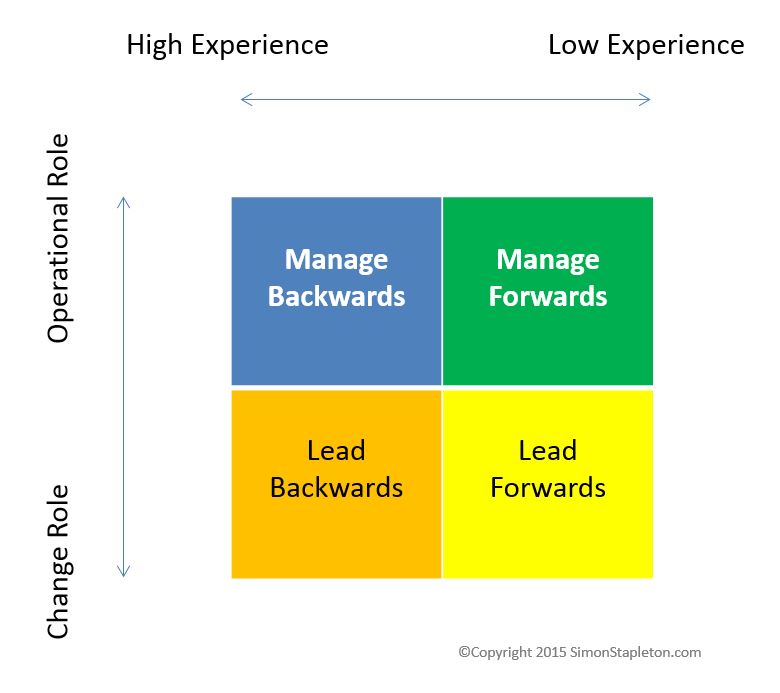Estimated reading time: 3 mins
You may be in the wrong kind of meeting with your manager. And your manager might not even know this.
There are four types of One on One Meeting. These are the meetings where you and your manager/supervisor get together on a regular basis. Your One on One Meeting is a precious opportunity to ensure that you and your manager are aligned and in sync. The thing is, if you’re in the wrong type of meeting, it’s not going to help you perform well in your job.
Below are the four types of meeting. Which should you use? In a typical organization, the type of meeting you have is dependent on the style and preference of your manager (and often, this is the only factor which influences it.) But instead, the most effective type for you is dependent on the kind of role you perform, ranging from Change Roles, such as Project Manager to Operational Roles (such as Help Desk Manager), and your experience in your role.
I’ve created this picture which illustrates this:

Manage Backwards
This type of meeting is where you and your manager review work already carried out since your last meeting. It will tend to be data-driven and review if targets were hit, or not. You may have Key Performance Indicators that will measured against, and you and your manager will discuss under-performance or over-performance, in order to manage the right level of achievement. Your manager may reward or penalize you. Your position should be very clear, as a result. You might also review a To-Do list which defines specific, granular objectives.
Manage Forwards
This is where you and your manager look ahead at work to be carried out before your next meeting. You may use analytics and other data to forecast future achievement of performance targets and make adjustments accordingly, which could be funding, resourcing and/or prioritization. You might also create or add to a To-Do list which defines specific, granular objectives.
Both of these meeting types are objective in nature, use quantitative inputs/outputs and focus on the achievement of organizational results, already established.
Lead Backwards
This type of meeting involves reviewing change, and how it was brought about, since your last meeting. You and your manager will review what went well, and what didn’t, from a behavioral perspective. You may review how you achieved specific change goals. This meeting should focus on the competencies and processes you used to deliver the required change.
Lead Forwards
This is where you and your manager agree on the changes you will make, and how to make them happen, before your next meeting. You may agree on which personal and organizational behaviors you intend to change, and how. Your manager may use this meeting to inspire and motivate you towards these goals, and you may discuss the competencies and processes required to deliver the required change.
Both of these meeting types are subjective in nature, use qualitative inputs/outputs and focus on the achievement of organizational change.
Implications
If you’re in the wrong kind of One on One Meeting, you’re unlikely to be focusing on what you need to do your job. This isn’t good for you and your manager. Your manager may not even be aware that your meetings are not working for you – if you haven’t said anything before now. You can solve this by talking to your manager and suggesting that your One on One Meetings are changed to suit your needs, using one of the four types above.
Did this help you?
Please share your story by leaving a comment below, or starting a discussion in my Community Forums.
